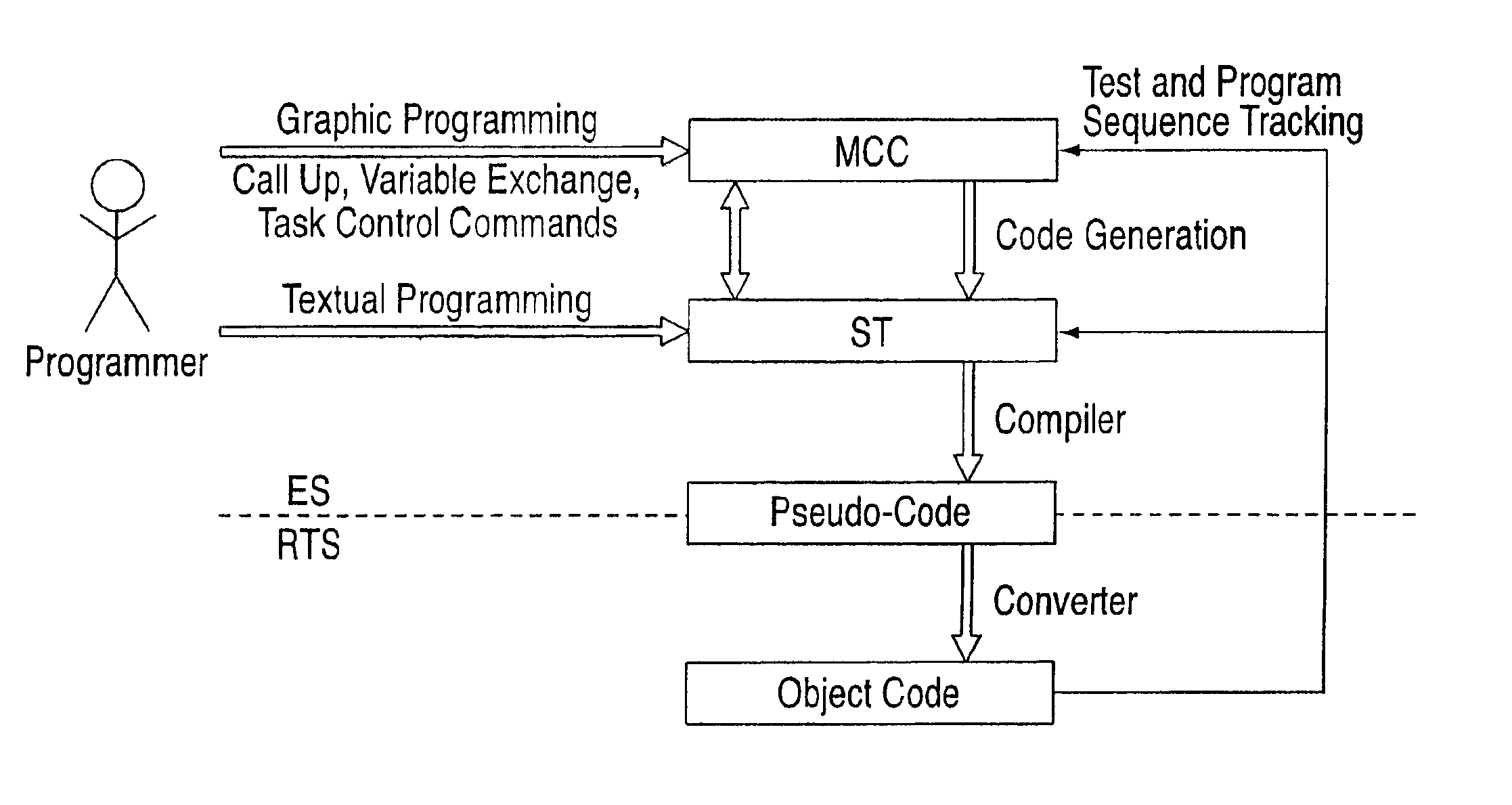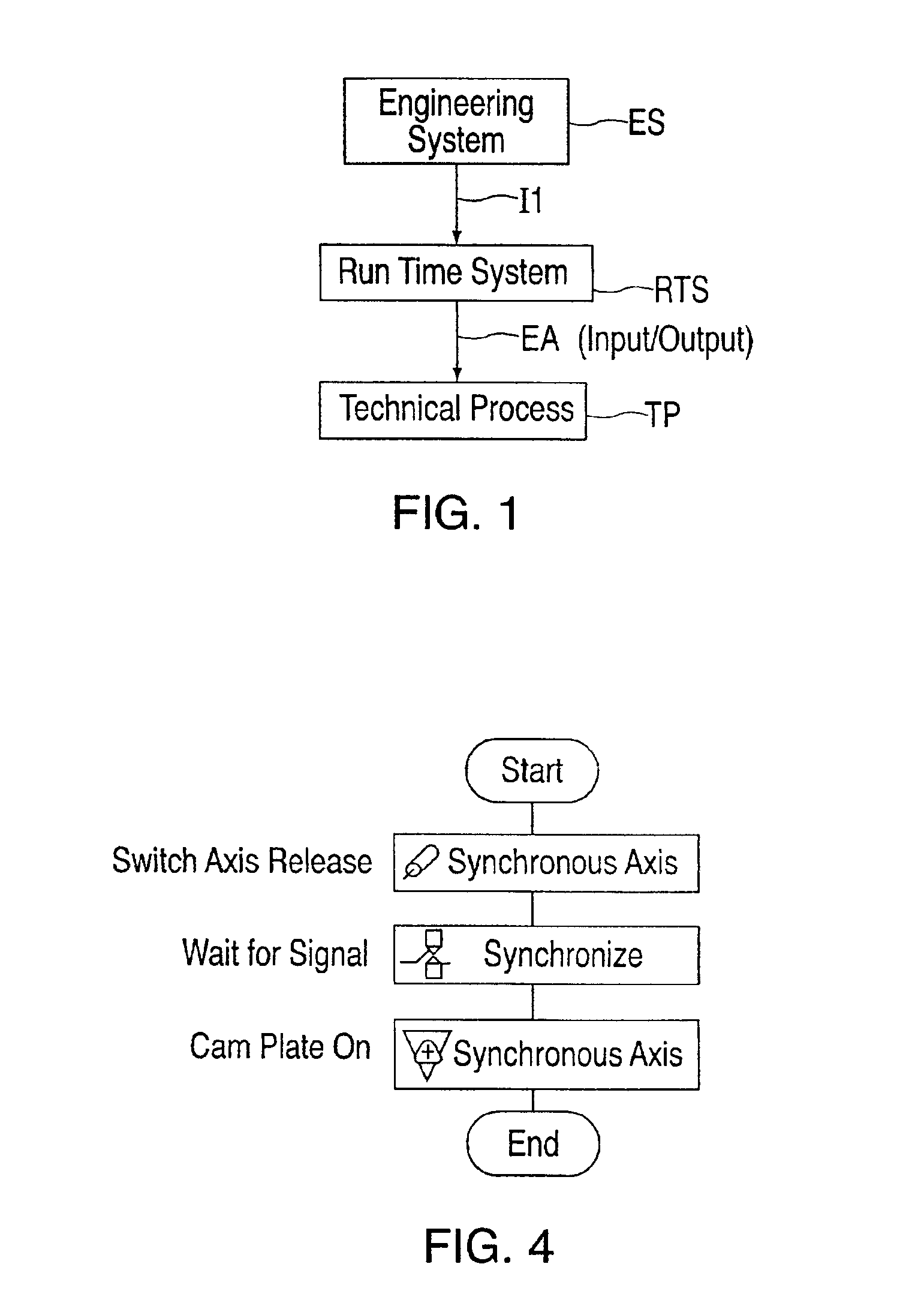Flowchart programming for industrial controllers, in particular motion controllers
a technology of motion controllers and flowcharts, applied in the field of flowchart programming for industrial controllers, can solve the problems of restricting user debugging options, affecting the user's understanding of the program, and the existing flowchart editors that do not provide adequate support for the creation of programs for both fields of applications, so as to improve the operating efficiency of the user, reduce or expand the form, and facilitate the user's understanding
- Summary
- Abstract
- Description
- Claims
- Application Information
AI Technical Summary
Benefits of technology
Problems solved by technology
Method used
Image
Examples
Embodiment Construction
[0045]In FIG. 1, a block diagram shows that a technical process TP is controlled by the run time system RTS of an industrial controller. The connection between the run time system RTS and the controller, and the technical process TP, is bi-directional over the input / output EA. Programming of the controller and, thus, the specification of the behavior of the run time system RTS takes place in the engineering system ES. The engineering system ES contains tools for configuring, designing and programming machines, and for the control of technical processes. The programs generated in the engineering system are sent to the run time system RTS of the controller over information path I1. With regard to its hardware equipment, an engineering system ES usually comprises of a computer system with a graphical display screen (e.g., a video display unit), input means (e.g., a keyboard and mouse), a processor, working memory and secondary memory, a device for accommodating computer readable media ...
PUM
 Login to View More
Login to View More Abstract
Description
Claims
Application Information
 Login to View More
Login to View More - R&D
- Intellectual Property
- Life Sciences
- Materials
- Tech Scout
- Unparalleled Data Quality
- Higher Quality Content
- 60% Fewer Hallucinations
Browse by: Latest US Patents, China's latest patents, Technical Efficacy Thesaurus, Application Domain, Technology Topic, Popular Technical Reports.
© 2025 PatSnap. All rights reserved.Legal|Privacy policy|Modern Slavery Act Transparency Statement|Sitemap|About US| Contact US: help@patsnap.com



